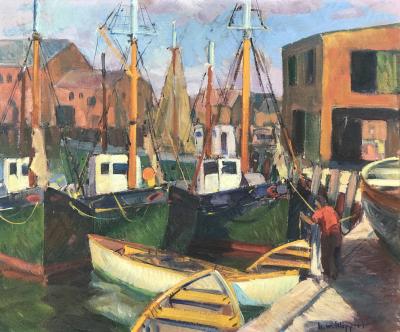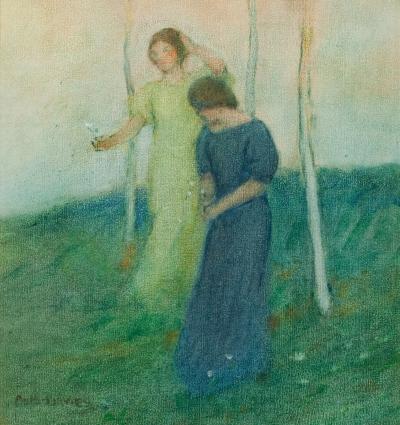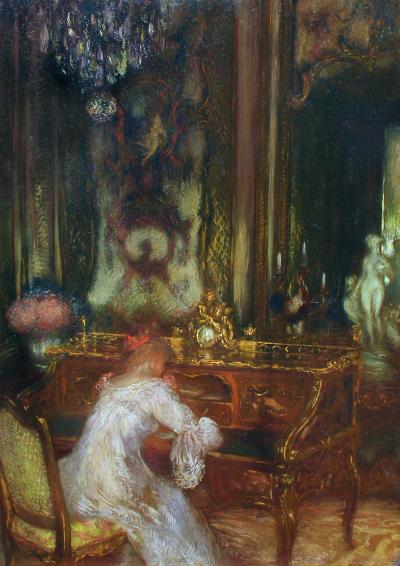Illuminating American Impressionist Edmund C. Tarbell: Life and Art on the Piscataqua
This archive article was originally published in the 16th Anniversary issue of Antiques & Fine Art magazine.
Edmund C. Tarbell (1862–1938) was one of the major American Impressionist painters and a pioneer of the “Boston School.” His works are known for their rich hues that emphasize light, tone, and delicate brushwork. During his career, Tarbell received portrait commissions from some of the wealthiest and most powerful men of his day, including Henry Clay Frick, Frederick Prince, Yale University President Timothy Dwight, and presidents Woodrow Wilson, Calvin Coolidge, and Herbert Hoover. Tarbell left a cohesive and vibrant legacy through his work and through his teaching at the School of the Museum of Fine Arts, Boston.
Tarbell had particularly close ties to Portsmouth and the Seacoast region of New Hampshire, where he resided for more than thirty years with his family on the island of New Castle. It was here where he also had a studio, which he utilized when not in Boston. Though initially a summer home, New Castle eventually became the Tarbell’s year-round residence. By his death in 1938, Edmund Tarbell was one of the Piscataqua region’s most widely recognized artists.
An exhibition at Discover Portsmouth opening this March, Illuminating Tarbell: Life and Art on the Piscataqua, will present Tarbell’s life and legacy through his artistic vision and principles, anchored in the local landscape and informed by his long-time residency in the Seacoast area. Unlike previous exhibitions of Tarbell’s work, this show will emphasize not just his paintings but also his oil studies, pastels, drawings, and engravings, with more than sixty works on display. A special section will showcase the resulting finished oil paintings to demonstrate Tarbell’s process from conception to completion. The show will feature works never before exhibited in addition to a number of well-known and well-traveled pieces. This show hopes to “Illuminate” the story of Tarbell’s time on the New Hampshire Seacoast not only with breathtaking works of art but by sharing a number of personal family letters, photographs, personal effects, antiques, and ephemera from the artist’s home and studio. A highlight of the exhibition will be a period reproduction the artist’s riverside studio complete with furniture, paintings, and props on loan from the Tarbell family. This show will allow viewers a more personal exploration into the artist’s life and art than ever before.
This portrait illustrates Tarbell’s early style of painting. Unlike his later, more composed and domestic scenes, this portrait conveys an heir of spontaneity and innocence. The sitter in the portrait is the artist’s sister-in law, nineteen-year-old Lydia Brooks Souther, later Lydia Souther Hatch. The artist’s wife, Emeline Souther Tarbell, and her sister were two of Tarbell’s more frequently used models from this period. The painting was first exhibited in March of 1891 at the St. Botolph Club in Boston in a joint show with fellow artist and friend Frank Benson. The painting received much acclaim and was hailed as “…a Remarkable portrait” and was “…imitated frequently” by many other artists of the day.1
In 1886, Tarbell returned to the states from Europe and within two years married young Emeline Souther of Boston, Massachusetts. This lovely impressionistic oil sketch of Emeline was executed around the time of their union. According to their daughter Josephine, her mother enjoyed Tarbell’s sketches and studies as much, if not more than the finished paintings. This early work was painted from life in or close to New Castle, N.H. As newlyweds, the Tarbells escaped hot Boston summers for the leisurely, less congested New England coastal villages in Massachusetts and New Hampshire. These sojourns began a family tradition that would continue for decades and resulted in their purchase of a home in New Castle.2
Before purchasing the Greek revival Cooper house in New Castle in 1905, the Tarbell family spent their summers in rented cottages up and down the New England coast. This airy coastal painting at the small, Cape Cod community of Cotuit is the earliest full portrait by Tarbell of his family. Here, everyone except for his eldest daughter is dressed in white; the blue ocean water glistening behind them. Josephine sits in her pink dress reading; her idle hand resting on her brother’s carriage. To her left is youngest daughter Mary; her older sister Mercie pretends to ride a toy horse next to her. On the far left their mother, Emeline, is seated in profile holding a very young Edmund in her lap. Edmund Arnold Tarbell was the artist’s only son. He was born during a family holiday in New Castle, N.H., in June of 1898.
This work shows Tarbell’s masterful treatment of light and shadow, and the influence of Vermeer. Light floods in through an unseen window behind his daughter Mary and her mother, who sits playing a game of solitaire. Light from the window beside Mary accents her right shoulder and cheek, intensifying the colors of her garment. The same light dissipates and gently illuminates Emeline’s face. Tarbell painted a number of vignettes with softly lit interiors, many of which were situated in the Tarbell house. This scene, however, with its strong geometric composition and angled view between the two rooms, is slightly more complex than others he painted of this genre.
One of only a few pure Tarbell landscapes, this view is painted in a color palette favored by the artist. He often added accents of pink and red for contrast as was done here with the small flowers on the embankment. The artist would have seen this view of Portsmouth’s North Church from his riverside studio, which he built at the back of his New Castle property in circa 1907. In his daughter Josephine’s words, the studio was “one large room like a barn but had a porch around two sides…there mother and father used to sit in the summer evening and see the sunset on the Town of Portsmouth.”3
Full of vibrant color and light, Tarbell painted this view of his garden facing northwest toward the naval prison (seen in the background) across the river in Kittery, Maine. The circular reflecting pool in the foreground is visible in a number of Tarbell’s figural landscapes and the stone pool structure still exists on the property. More of an outdoor still life than a “landscape painting,” this image depicts a portion of the Tarbell property in its hay-day, with gardens in full bloom.
As part of the ongoing expansion and beautification of the home and grounds, Tarbell hired a gardener to create and maintain gardens on the three-acre property. When in season, the Tarbells enjoyed various types of roses, peonies, irises, hollyhocks and other flowering plants.4 Though Tarbell painted relatively few still life works, when he did, they were often arranged with bouquets he had assembled with flowers from his gardens. An antiquarian at heart, Tarbell collected antiques during a period when society generally considered it “used furniture.” He incorporated many of the antiques and smaller decorative items into his compositions, as with Still Life with Roses. While some items served functional purposes, many were simply used as props. The artist would move them around his home and studio until he had achieved the desired composition or grouping. Many of these original props are still owned by the Tarbell family and a number of them will be on display in the upcoming Portsmouth exhibition.
A much darker painting than many of Tarbell’s figural interiors, this portrait is reminiscent of works by Dutch artist like Johannes Vermeer and Gerard ter Borch; artists by whom Tarbell was admittedly influenced. This work has a similar design and intimacy as that of Vermeer’s A Maid Asleep (1656–1657; The Metropolitan Museum of Art) and A Lady Writing (1665; National Portrait Gallery, Washington D.C.), which are works a well-travelled Tarbell would have known and seen. The unknown sitter was likely one of Tarbell’s models from Boston. He had a number of antique Asian screens at his home in New Castle, suggesting this work was painted at his New Hampshire studio. The current exhibition is the first time this painting will been on public view, having been brought to light by the family about ten years ago.
The Tarbells built a stable located at the southeastern corner of the property, which they referred to as the carriage house; a groom tended to and cared for the horses. It was part of the expansion that included tripling the size of the house and adding tennis courts and a studio. Around 1913–1914, Tarbell purchased a strawberry chestnut Arabian stallion named Eaglet; he planned to use the stallion as a model in a large equestrian painting.5 Tarbell included Eaglet in a number of works, including this portrait of his teenage son, Edmund. The two are posed on the back lawn of the Tarbell property with the river behind them.
Though a study, this painting has the appearance of a nearly finished work. It was used as the basis for the center section of the larger equestrian painting, Edmund and Eaglet. Tarbell painted two other individual studies for this more expansive work, including an oil sketch of Eaglet’s head. The other study is a colorful canvas of the back end of the horse, which is in the collection of the Hood Museum of Art at Dartmouth College. When Tarbell completed the painting it was exhibited to great acclaim, winning first prize at the Panama Pacific International exhibition in 1915.
Tarbell gave the horse to Edmund as a gift. The stallion went on to win twenty to thirty blue ribbons within a two year period. Eaglet was noted in the papers as one if the “best breed horses in America.” 6
For this portrait, Tarbell placed his youngest daughter Mary in front of one of his many antique Asian screen props. Mary’s pale, rosy-cheeked complexion contrasts against her black jacket and wonderfully shaped black hat, both of which are complemented by the realistic image on the screen of a gnarled tree. Mary seemed to be ever present around the Tarbell house. She moved back home after a short, unsuccessful marriage to a naval officer. As relayed by the family, Mary never seemed to mind posing and could hold a pose for hours; an artist’s ideal sitter. As such, she is present in more Tarbell paintings than any other sitter.
This painting was first exhibited in 1931 at the Pennsylvania Academy of Fine Arts. This large portrait shows the artist’s grandson posed on the grounds of the artist’s home in New Castle. Young Edmund, age three, was given the pony, Peanut, as a gift from his father Edmund A. Tarbell. Much like he did with the portrait of Edmund and Eaglet, Tarbell gave much thought and preparation to the portrait of his grandson, Edmund C. Tarbell II, including commissioning a special saddle for the occasion. Being so young, little Edmund posed in short one-hour sessions every day for several weeks.7 Some of these sessions were captured in a series of small black and white photographs, which will be on view during the upcoming exhibition, as will a small preparatory pastel.
Tarbell painted this portrait of famed neurosurgeon Dr. Harvey Cushing (1869–1939) in his New Castle studio in 1908. The portrait was commissioned by Cushing’s father while Cushing was an associate professor of surgery at John Hopkins University.8 Cushing’s father asked his son to arrange to have his portrait done in oil by the “best artist Baltimore, Philadelphia, or Washington holds forth and will pay cash on demand.” Edmund C. Tarbell was instead selected to paint the portrait and was paid the handsome sum of $2,500.9 Tarbell and Cushing likely knew one another prior to the commission through their mutual involvement in the St. Botolph and Tavern clubs of Boston. The Cushing family had a summer home at Little Boars Head in nearby North Hampton, New Hampshire, not far from the Tarbell’s. For the portrait, Tarbell relied on photographs taken during one of Cushing’s studio sittings; a technique he frequently employed. The resulting work is one of artist’s most successful portraits and shows the young doctor during the prime of his life and career. Cushing would go on to become a pioneer in the field of brain surgery and is considered by many “the father of Neuro surgery.” 10
In 1920, Tarbell painted this striking portrait of his two youngest children Edmund and Mary (at the ages of 22 and 24 respectively) and the family’s Russian Wolfhound, Sergius. The sibling’s refined clothing and strong confident poses are indicative of the upper middle-class lifestyle their father’s success provided. Each appears seemingly unaware of the other’s existence, which strongly suggests they posed separately for the portrait. Tarbell unifies the two with a calculated balancing of color throughout and integration of intense blues. Fifteen years after the sitting, Tarbell inscribed the painting and gave it to Edmund as a birthday gift.
Illuminating Tarbell: Life and Art on the Piscataqua and a companion exhibit Legacy in Action, demonstrated Tarbell’s lasting impact on six nationally recognized contemporary artists working in the region today, which was on exhibit at the Discover Portsmouth center in Portsmouth, N.H., just miles from the artist’s New Castle home. Organized by the Portsmouth Historical Society the exhibition was on view from March 3 to June 3, 2016, and was accompanied by a catalogue published by the Portsmouth Historical Society. For information visit www.portsmouthhistory.org or call 603.436.8433.
-----
Jeremy G. Fogg, an independent art researcher, is the manager of Anthony Moore Painting Conservation in York, Maine. He is curator of the Tarbell exhibition and co-author with Alastair Dacey, of the catalog of the joint exhibition.
This article was originally published in the 16th Anniversary issue of Antiques & Fine Art magazine, a fully digitized version of which is available at www.afamag.com. AFA is affiliated with Incollect.
2. Ferrell, Josephine Tarbell unpublished manuscript, “A Biography of Edmund Tarbell” (Jan. 14–27, 1963); Edmund Charles Tarbell Papers (1885–1977), Archives of American Art, Smithsonian, Washington, D.C.
3. Ibid.
4. Patricia Jobe Pierce, Edmund C. Tarbell and the Boston School of Painting (Hingham, Mass.: Pierce Galleries Inc., 1980), 117.
5. Josephine Tarbell, unbpublished manuscript.
6. “Eaglet, Model Show Horse First in Awards” Boston Herald (Thursday, January 1916), 6.
7. Pierce, 117.
8. Strickler, Susan. Impressionism Transformed, The Paintings of Edmund C. Tarbell (Manchester, N.H.: Currier Gallery of Arts, 2005).
9. Bliss, Michael. Harvey Cushing: A Life in Surgery (Oxford University Press, USA, 2005).
10. Dittrick Medical History, Case Western Reserve University Center. http://artsci.case.edu/dittrick/collections/images/painting/ (accessed Dec 12, 2015).















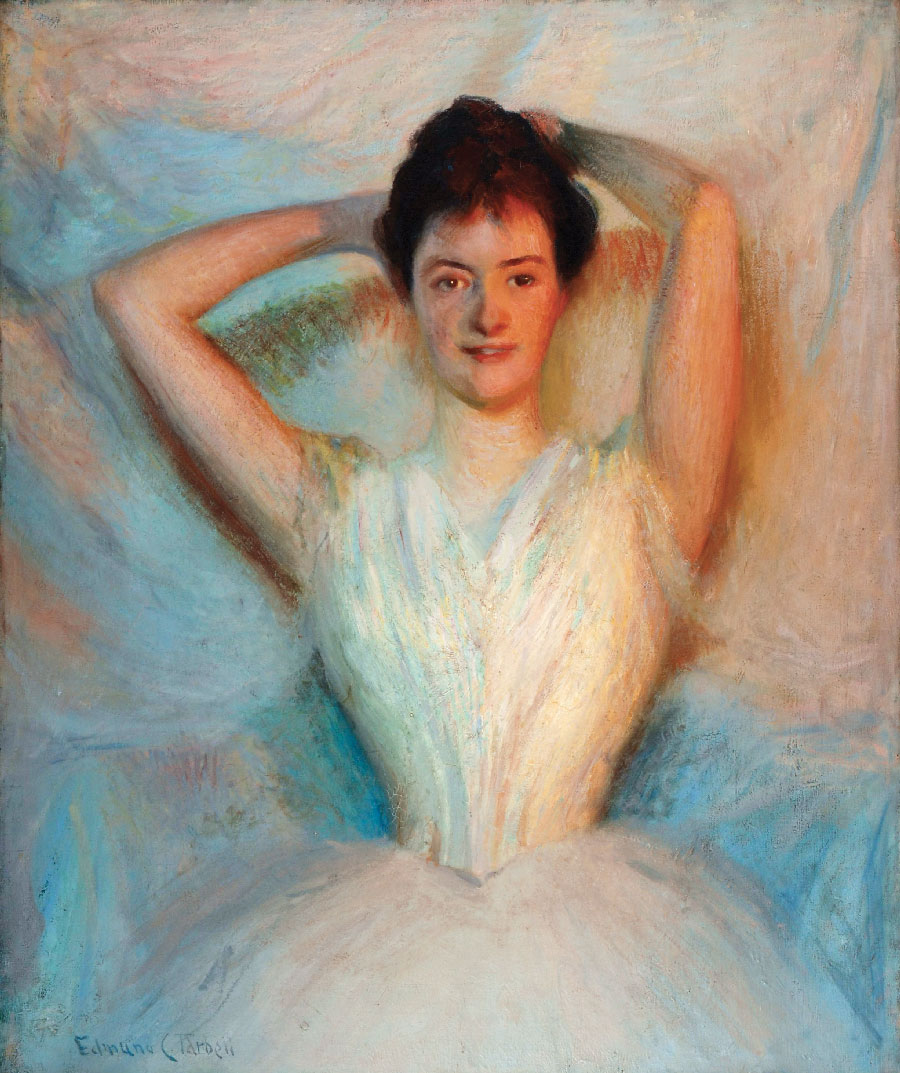
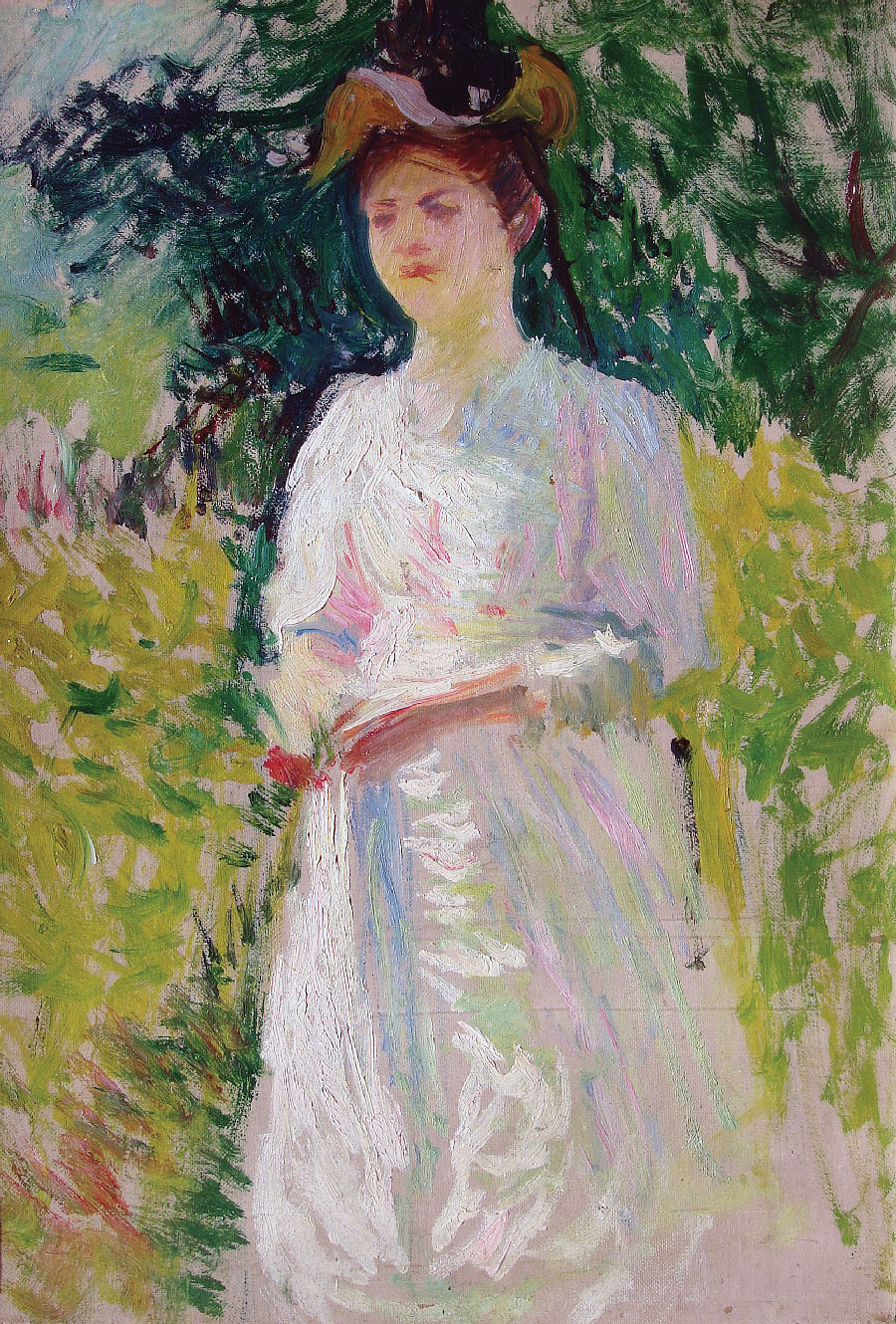
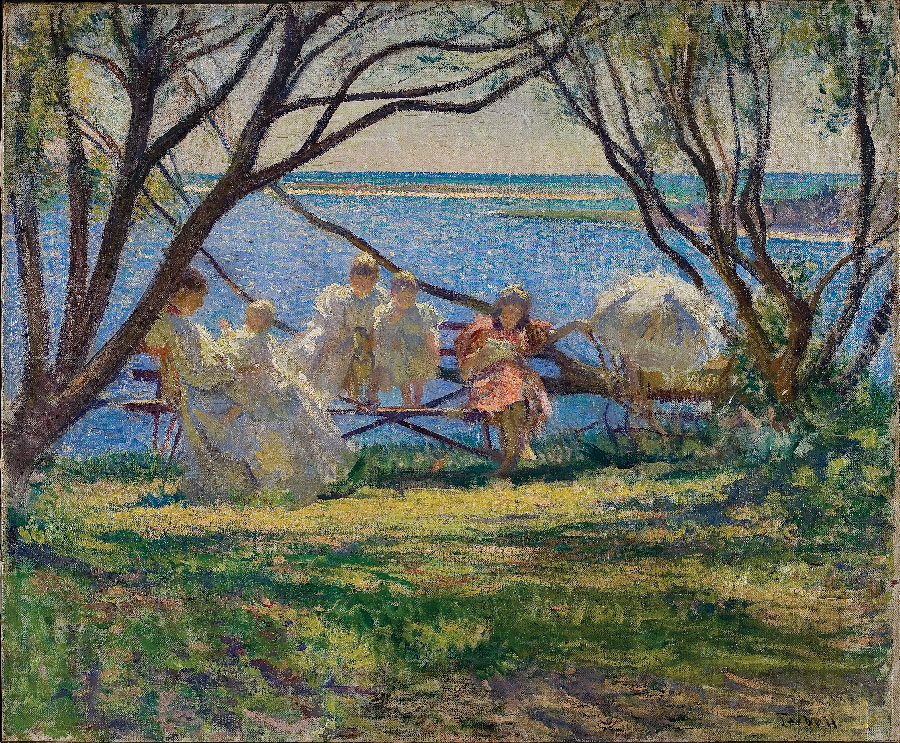
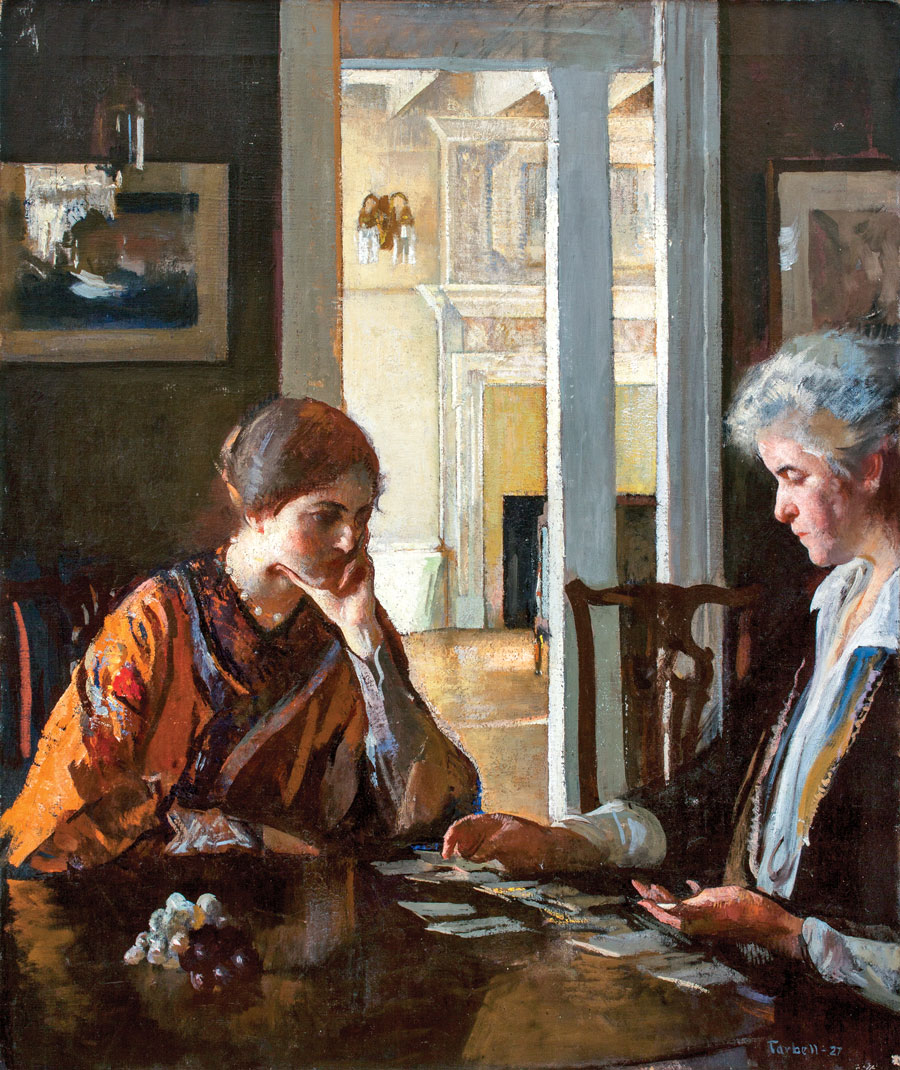
_.jpg)
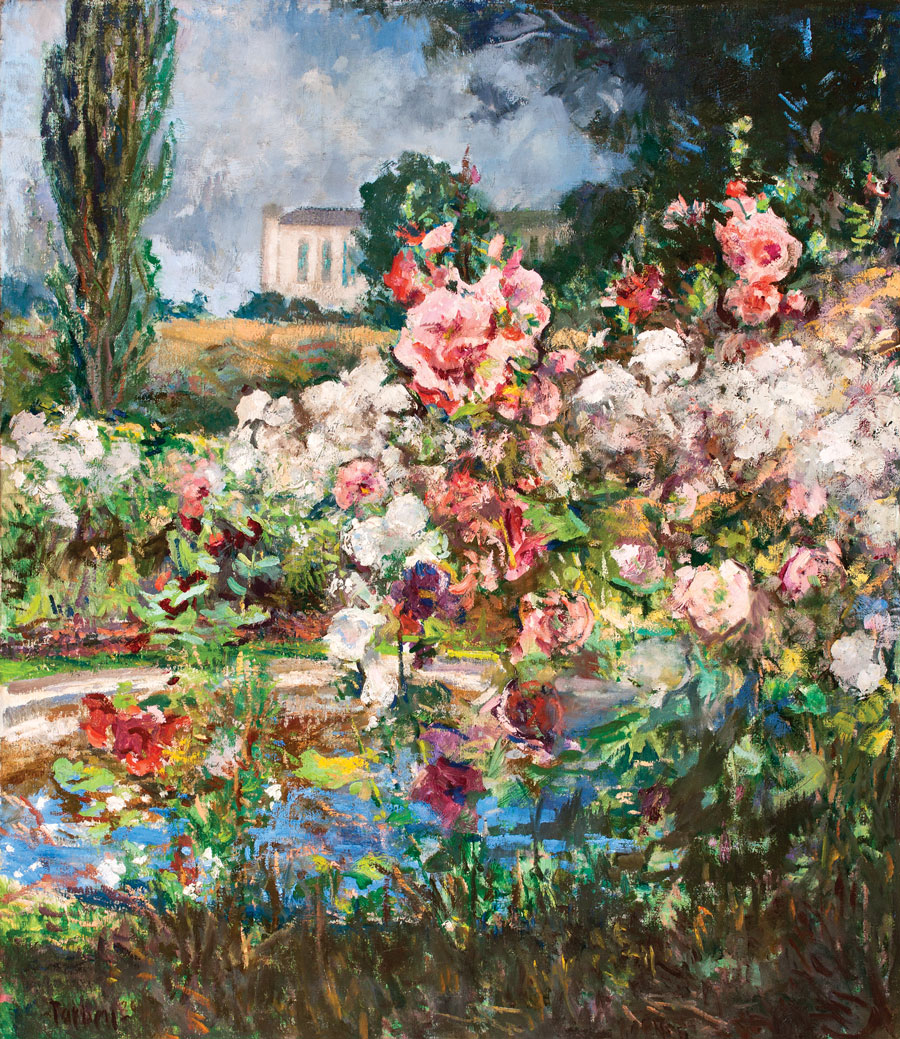
_.jpg)

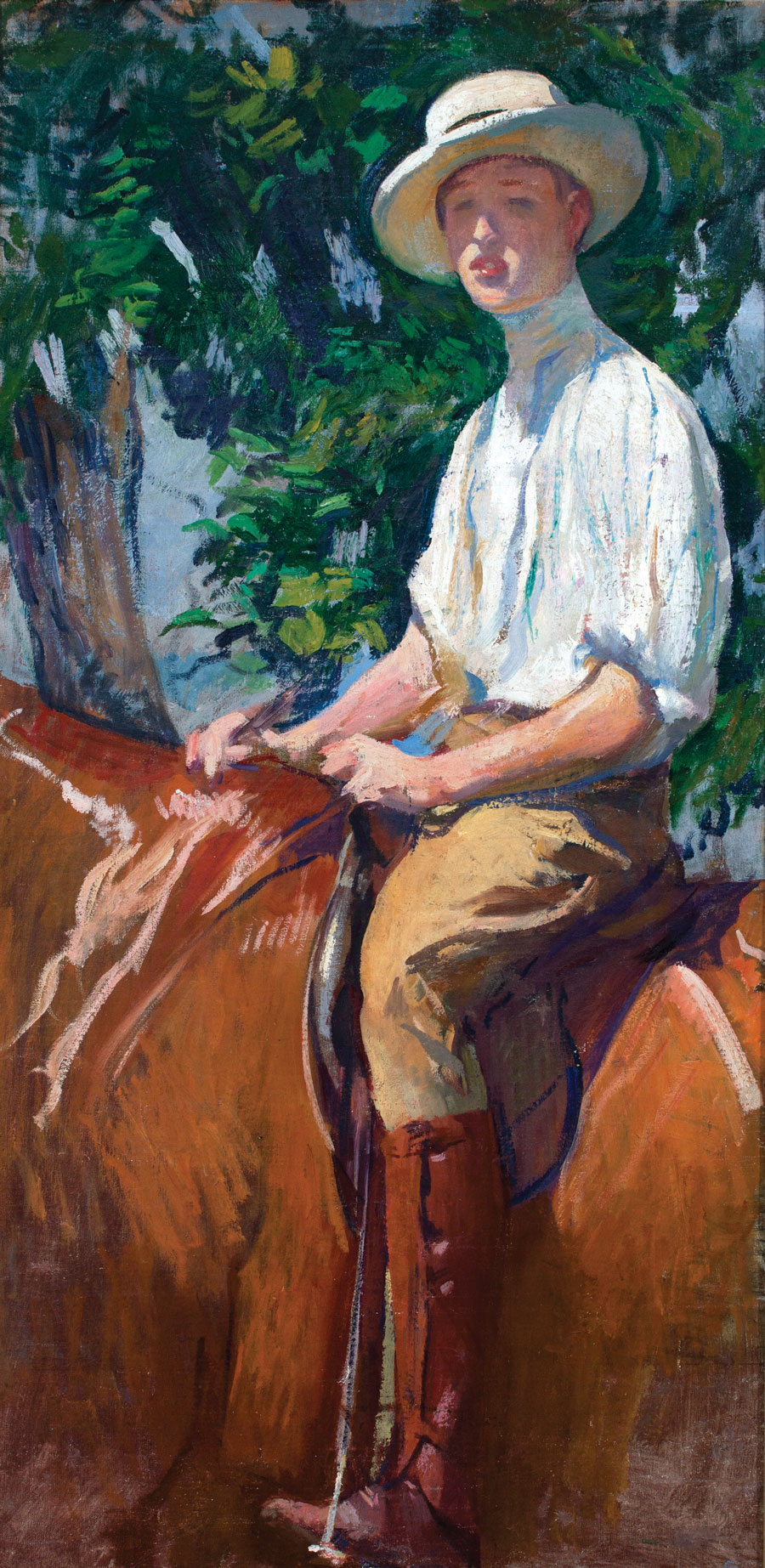

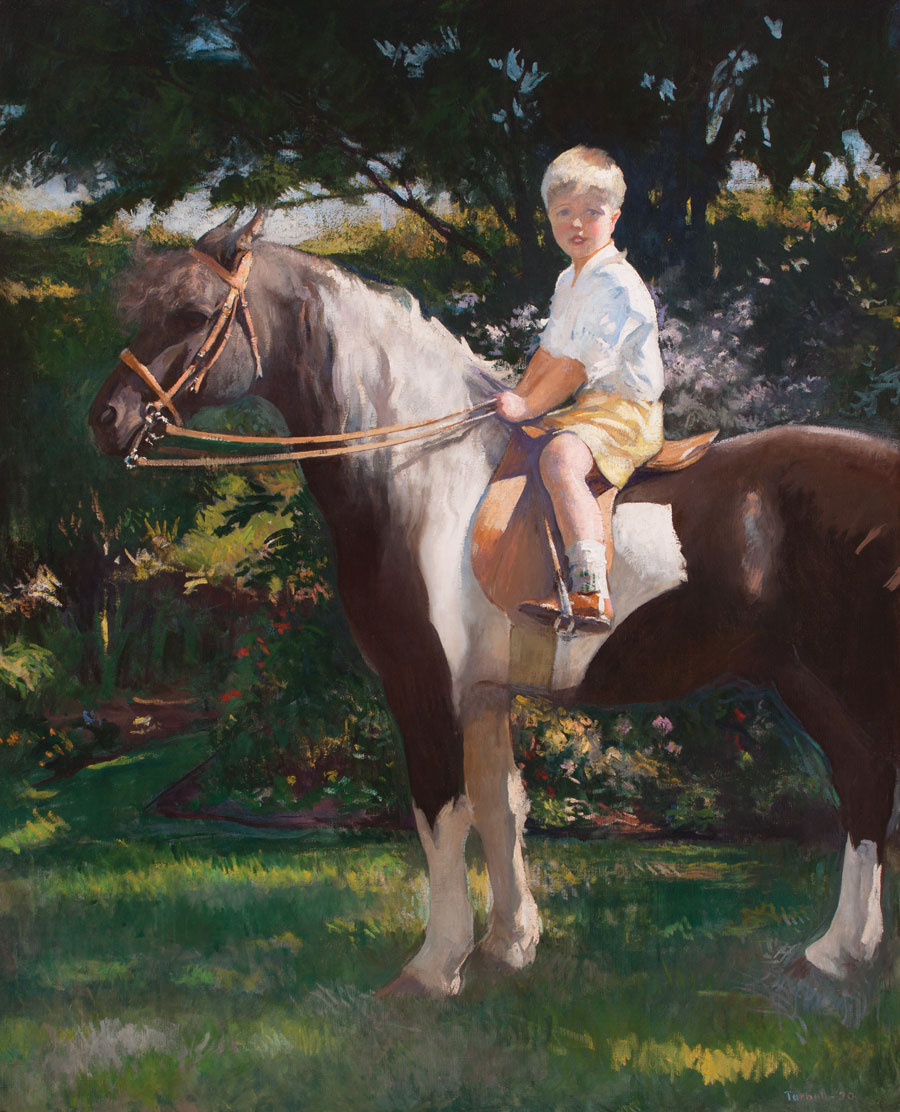
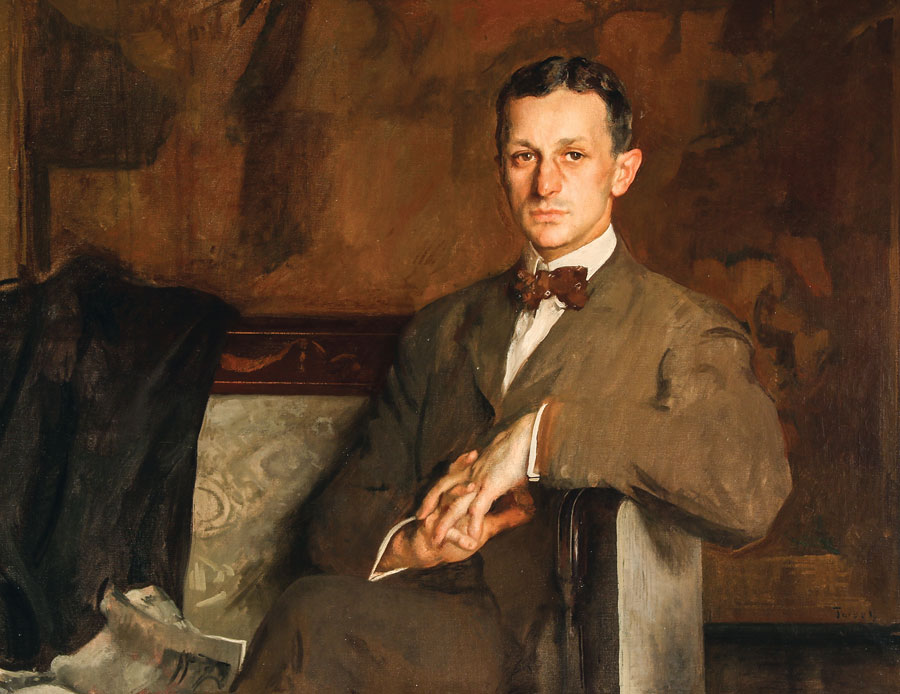
_.jpg)

